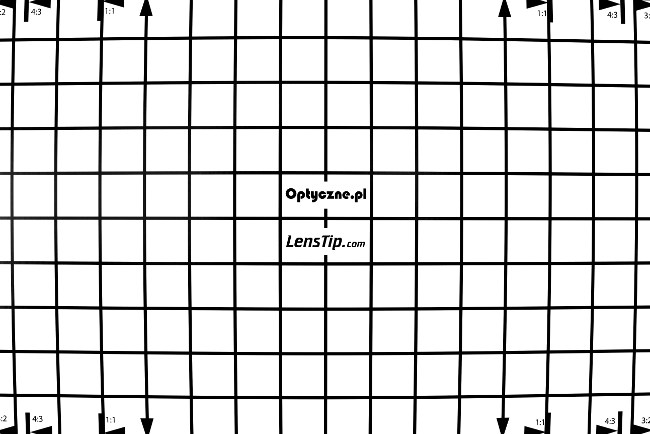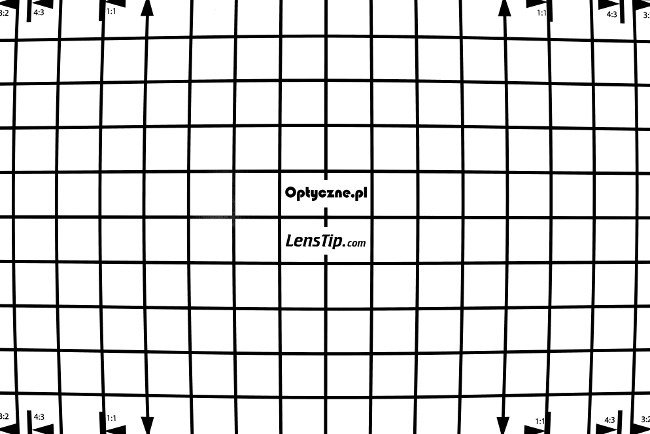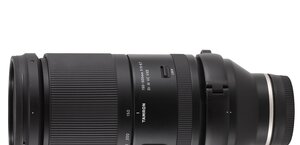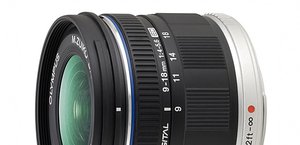Sigma A 20 mm f/1.4 DG DN
6. Distortion and field of view
Field of view
As we had photos of starry sky at our disposal we decided to measure the real field of view of the tested lens in JPEG files (in this case they aren't corrected so they reflect the parameters of the device quite well). In order to do that we transformed the pixel layout (X,Y) from the photo into the equatorial coordinate system (right ascension and declination), which locates a star on a celestial sphere. That way we could determine the field of view of the lens with utter precision and in the right way, so for rays of light coming from infinity. Transformation was based on over 200 stars set evenly across the frame, with relative mesh-fitting error amounting to 2 minutes and 19 seconds of arc so 0.0386 of a degree.As we use extreme pixels, positioned in the very corners of the frame, for determining the field of view, the mesh-fitting error might be a tad higher. We assess that it might be about 2-3 x higher than average mesh-fitting error, so on a level of 0.1 of a degree.
The field, determined that way, amounted to 95.33 degrees. It is a value a bit higher than 94.5 deg from official specifications but the difference is small and rather favourable – after all, in this class of equipment you would like to have the widest field possible. That's why we think you shouldn't worry too much about that difference.
Distortion
On the smaller APS-C sensor you see barrel distortion amounting to −1.96%. That value surprised us a bit because, after all, this lens's predecessor showed here just −0.66%, and distortion of the Sony was −1.36%.
Please Support UsIf you enjoy our reviews and articles, and you want us to continue our work please, support our website by donating through PayPal. The funds are going to be used for paying our editorial team, renting servers, and equipping our testing studio; only that way we will be able to continue providing you interesting content for free. |
- - - - - - - - - - - - - - - - - - - - - - - - - - - - - - - - - - - - - - - - - - - - - - - -
When you pass to full frame distortion increases but, fortunately, by not much - we got a result of −2.83% during our test. A small difference between measurements taken on both types of detectors suggest that you deal here with moustache distortion. Indeed, if you take a closer look you can notice it without problems. A distortion measurement for an area limited by 1:1 markings confirms it as well, amounting to −3.35%.
All these results are higher than the results of this lens's predecessor or its Sony rival. A pity that the new construction brushes off the correction of this aberration. After all the Art series was supposed to deliver the best of the best; distortion correction was supposed to be neglected only by the Contemporary series instruments. Once again you can notice a slight regress when you compare the performance of the new lens to that of the older construction.
| Sony A7R III, 20 mm, APS-C | |||
 |
|||
| Sony A7R III, 20 mm, FF | |||
 |
|||






